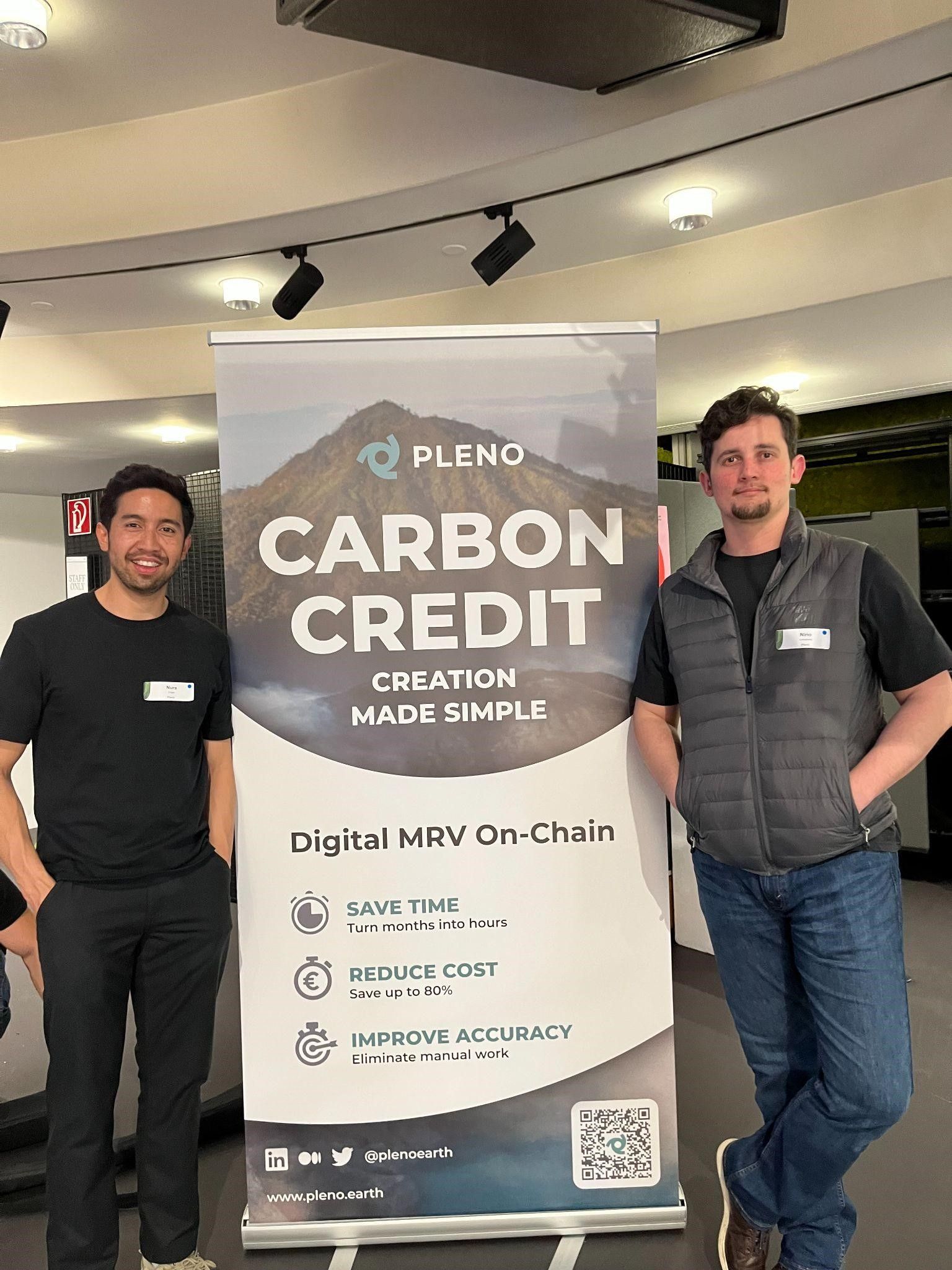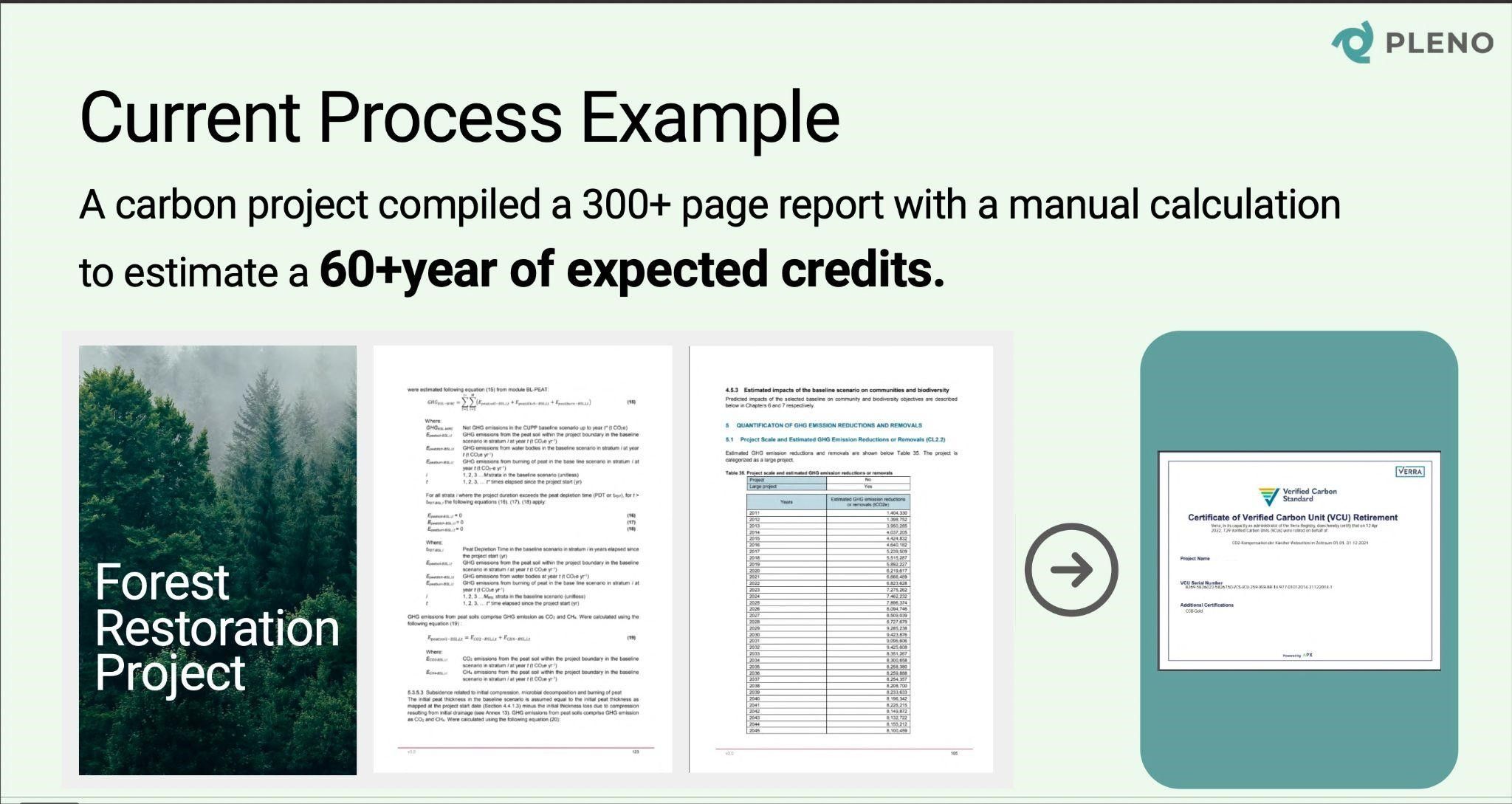Revolutionizing the Carbon Market: The PLENO Story
Inside Look: How Innovative Technology and Sustainability are Shaping the Future of Carbon Credits
Before diving into our intriguing interview with PLENO, it’s essential to understand the concept of carbon credits. Carbon credits, also known as CO2 certificates, are a fundamental tool in global efforts to reduce greenhouse gas emissions. Each carbon credit represents the avoidance or removal of one tonne of CO2 or an equivalent greenhouse gas from the atmosphere. Companies and organizations use these credits to offset their own unavoidable emissions by investing in projects that actively contribute to reducing CO2 emissions. These projects range from reforestation and renewable energy to energy efficiency initiatives. By purchasing carbon credits, businesses can improve their carbon footprint while simultaneously supporting projects that have a positive impact on the climate and environment.
Now that we have a basic understanding of carbon credits, let’s explore PLENO, an innovative company reshaping this dynamic with cutting-edge technology and principles of sustainability:
Philipp: PLENO is an emerging company in the field of sustainability and technology. Could you briefly introduce what PLENO does and what your mission is?
Nura: PLENO is an automation for carbon project. We streamline the end to end process to create carbon credits. Just like how Taxfix simplify the process to file tax return in Germany, we want to do it for carbon credits.
Philipp: What inspired the inception of PLENO, and how does your background fuel your passion for sustainability and technology?
Nura: I come from an island in Indonesia, a place directly affected by climate change. We faced rising sea levels and extreme dry seasons, along with environmental issues like massive land conversion and losing our natural forests for the sake of economic development.
My journey in sustainability began with my studies in Australia and continued over the past seven years, working in sustainability and carbon management in South East Asia and Germany. I’ve seen how hard companies tried to cut down their emissions, but there’s always many emissions left that can’t be avoided. That’s where carbon credits come in – they are a tool for companies to balance their emissions through financing climate positive projects.
But creating carbon credits is tough. It involves a lot of detailed, manual work to measure and verify them correctly. This challenge sparked the idea for PLENO.
Last year, with the support of my childhood friend Nino who is now my co-founder, we decided to tackle this issue together. We wanted to use digital technology to measure and verify carbon credits more efficiently and accurately. So, we set out to create PLENO with a clear goal: to streamline carbon projects through automation.

Image 1: My co-founder Nino and I during our first event in Munich last year
Philipp: Can you elaborate on the primary challenges you observed in the carbon credit market and how PLENO addresses these issues?
Nura: Over recent months, we’ve spoken to over 300 carbon projects and buyers worldwide. We’ve found three big issues in the carbon market:
- Time: It’s a slow process, taking up to two years from beginning to certification. Just the initial studies can take weeks. Writing the project design and starting the project can take months, as it needs a lot of data for accurate calculations. The checking and validating process of the project adds even more time.
- Costs: This detailed process often requires expensive consultants, sometimes costing over $100,000. As more projects pop up and there aren’t enough experts, these costs can increase.
- Accuracy: The traditional way of calculating how much carbon a project captures isn’t always precise. For example, many forestry projects were criticized because they were deemed to capture less carbon than they actually claim, which makes buyers becoming skeptical.
PLENO is tackling all these problems in one platform. By combining satellite data and machine learning, our software makes the calculations much more accurate. Plus, projects can be monitored and checked in real time, making it more trustworthy and efficient.

Image 2: The current process relies on manual work that leads to many issues
Philipp: How does PLENO integrate AI and machine learning to measure carbon credit?
Nura: We are leveraging computer vision and machine learning in our software. Our approach is dedicated to accurately quantifying emission-related information from geospatial data. This process involves various detections e.g. tree species, their heights, and diameters at breast-height, enabling us to reliably predict carbon credits.
Furthermore, we employ cutting-edge deep generative artificial neural networks models (ANN) to reconstruct realistic images in challenging environments, such as cloudy or underwater areas. This innovation is crucial for analyzing aquatic vegetation, effectively addressing the common issues of unclear and diluted imagery often encountered in remote sensing due to interference from light, water, and cloud cover.
Complementing these technical advancements, we offer a personalized smart assistant tool that is designed to provide an intuitive interpretation of carbon project analyses, streamline report generation for stakeholders, and reliably assess the risks associated with carbon projects.
Philipp: How does PLENO apply blockchain technology to enhance the carbon credit creation process?
Nura: We aim to make carbon credit projects clear and transparent from the beginning, not just at the end when credits are issued. Although we are thinking big, we’d like to start small and focus on the real pain point of our customers: the validation process.
Right now, projects have to be checked by certified third party auditors. But we’ve found that some projects want a faster, yet still reliable, way to do this.
The key thing for these projects is to make sure they meet high standards and truly contribute to the additionality of carbon removal. To improve this process, we’re experimenting with a new way of doing things.
We’re building a decentralized network of validators in a network such as Human Protocol. This means that people from all over the world can be employed to verify and validate carbon projects. They’ll be incentivized to do a thorough job because we will only accept high-quality work that has been done by at least 2 validators, and bad-quality work or fraudulent behavior will be disincentivized through transparent record of the work being done.
This new method opens up the validation process. People with knowledge in fields such as forestry or geospatial that have done our online training, can now help verify these projects independently. This will greatly cut down the cost and time usually needed for checking and confirming these projects. By combining these changes, we’re not just differentiating ourselves in the market; we’re also making the process of validating carbon projects more reliable and accessible to everyone.
In the second part of the interview, we will delve deeper into the idea of PLENO and how a carbon credit project really works. Don’t miss it!

Contact the author
Philipp Misura
e-mail: Philipp.Misura@horn-company.de
Your gateway to industry knowledge and expert analysis! Follow us on LinkedIn for exclusive professional articles and project insights.
